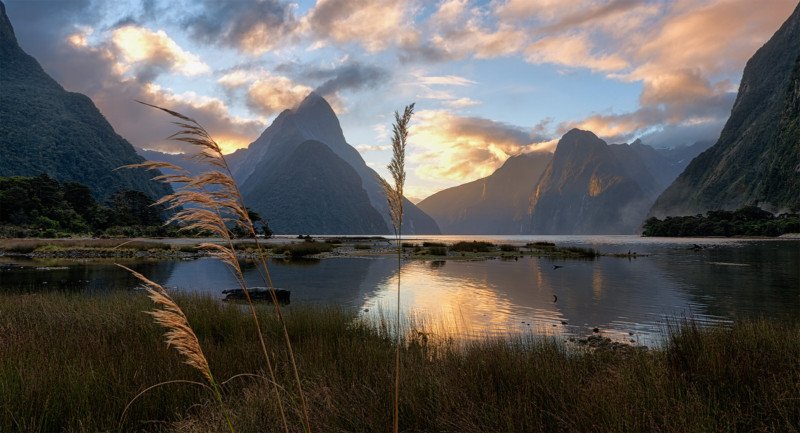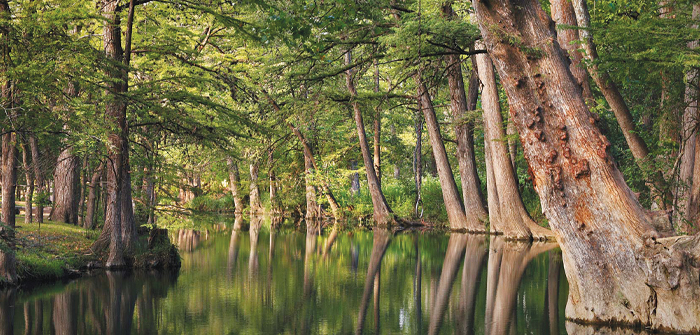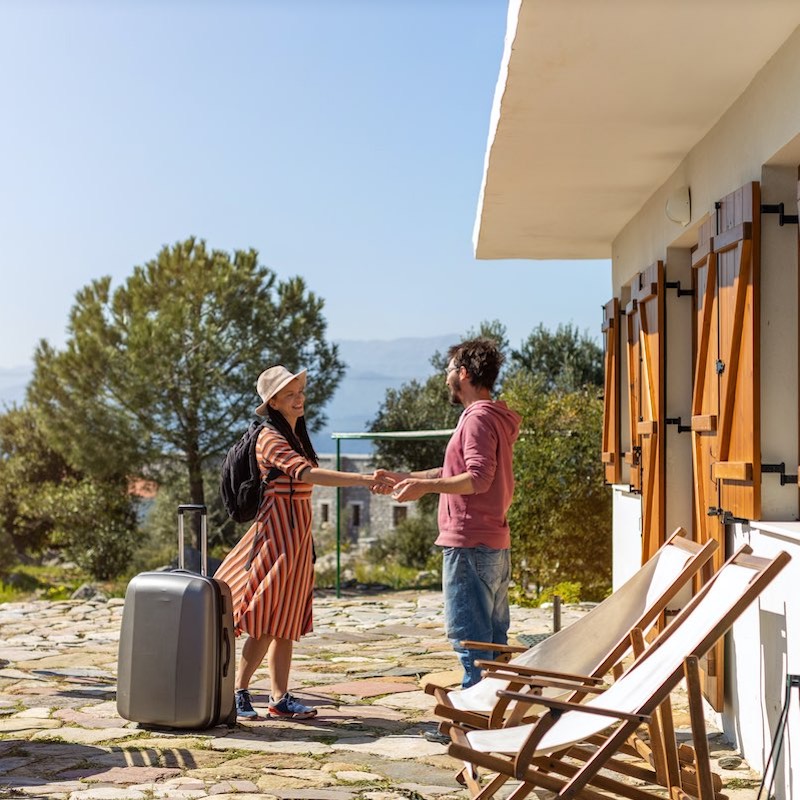[ad_1]
![]()
Here’s a question that I’ve asked myself many times over the past few years: does it make sense to travel abroad to take photos?
The first few times that I asked myself this question the answer was always an emphatic — yes, absolutely! I have traveled abroad extensively in my quest to take pretty pictures. As a passionate landscape photographer, I’ve felt inspired to identify and travel to all the most photogenic locations on the planet, to capture them in the best possible way. Every time I saw a photo of another amazing location, I would add that location to my bucket list of places to visit and photograph before I die.
Many of the locations on my bucket list were in neighboring countries, but most of them were on the other side of the globe. I decided to pick all the low-hanging fruit first, visiting all the best locations that were closest to home. Finding new and interesting compositions of these popular locations did prove quite challenging, but I always had a lot of fun while attempting to capture something unique.
![]()
My next few trips abroad were as a paying client on photographic tours. Everything is always organized for you on these tours (transport, accommodation, meals, etc.), and you’re always taken to all the most iconic locations at the best times of the day. You might not have many opportunities to explore any new locations on these tours, but you will almost certainly return home with some beautiful photographs.
Next, I planned a couple of solo trips a bit further from home, and later I started organizing my own photo tours to the countries and locations that I’d previously explored. Many of my favorite photos were captured on these trips abroad, and a couple of them still feature in my portfolio.
I’ve decided not to include any captions with any of the photos in this article. If you’re still reading this, then you’re most likely a passionate landscape photographer who already knows exactly where all of these photos were taken.
![]()
But let’s first look at the most popular and accepted definition of the word “abroad” – which is “beyond the boundaries of one’s country”. Some people might travel abroad by boat, train, or car, but I have always done so by plane.
As its name would suggest, South Africa can be found at the lower end of the African continent. I might live in a beautiful country full of photographic opportunities, but most of the locations that were at the upper end of my bucket list required many hours of flying to reach.
Here are ten good reasons (in no particular order) why anyone might want to travel to another country;
- To visit distant family and/or friends.
- To participate in an international sporting event.
- For business purposes (meetings with important clients).
- For medical reasons (best treatments may only be offered abroad).
- Scientific research into some previously unstudied foreign phenomenon.
- Doing something that nobody has done before (exploration/adventure).
- As a refugee when conditions in your own country become unbearable.
- As a famous musician (rock-star) touring the world with your band.
- To experience cultures, history, and foods different from your own.
- To take photos of something.
There may be a few other valid reasons for voluntarily enclosing yourself in a pressurized capsule hurtling along at great speed across long distances several thousand meters up in the sky, but I can’t think of any more right now.
![]()
But there is a big difference between “traveling abroad and taking photos” and “traveling abroad to take photos”. Everyone has a camera in their pocket these days (their mobile phone), so it wouldn’t make sense to travel somewhere and not take any photos while you’re there. However, after much consideration, I’ve now come to the conclusion that it doesn’t make any sense to travel abroad with the primary intention of taking photos of something. Please allow me to explain my reasoning.
![]()
Here are a few things to consider if you’re thinking about traveling abroad somewhere to take photos of something (in no particular order);
Consider Your Carbon Footprint
Should we give up flying for the sake of our planet? Everything we do releases some greenhouse gases into the atmosphere, all of which have a direct impact on the climate of the planet. Nearly 2.5% of all global CO2 emissions are from the aviation industry.
MyClimate.org calculates that the carbon footprint for a single person on a return flight from Cape Town (South Africa) to London’s Heathrow airport would be 3.2 tonnes of CO2. That’s a lot of carbon!
Weight and Contents of Hand-luggage
Most airlines impose restrictions on the weight of your check-in and hand luggage. All the airlines that I’ve ever flown with have limited my hand luggage to 15 kilograms. I might decide to pack my travel tripod into my check-in luggage, but as a rule, I will always pack all my camera gear into my hand luggage.
But all my camera gear has always weighed much more than 15 kg. So now I have to decide what gear to pack and what gear to leave at home. Another thing to consider is whether we should pack a second camera body in case something goes wrong with our primary camera. We’ve made a lot of effort (and paid a lot of money) to visit these distant locations, so it would be a complete disaster if the technology failed us and we couldn’t get any photos!
Only Enough Time to Visit the Most Iconic Locations
Before we travel anywhere to take a photo of anything, we usually already have a pretty good mental image of some of the things that we want to take photos of. Of course, there will always be some unplanned moments with surprising results, but if we only have a limited time to take beautiful photos in a foreign country, then it would seem silly to ignore the most iconic locations and compositions on offer. This doesn’t leave us with much time to explore the rest of what the area has to offer, to capture other interesting (and possibly more unique) compositions.
Many Other Photographers Shooting Exactly the Same Thing
The most iconic locations on our planet are usually also the most popular locations on the planet. They’re iconic for a very good reason. Most people visiting these locations are taking photos and sharing them on social media. The more amazing the photos, the more people want to visit those locations. I once enjoyed (not) a beautiful sunrise at an extremely popular location with more than 300 other photographers.
Shooting Sunrise and Sunset Every Day in a Different Location
As landscape photographers, our busiest times are usually at sunrise and sunset. I always try to arrive at my morning locations at least an hour before sunrise and remain at my sunset locations until the last light has faded from the sky. I might decide to take a short nap back at my hotel during the harsh light of midday hours, but for me, photography will always take precedence over sleep.
I try to squeeze the most out of every minute when I’m visiting any foreign country. I usually plan to explore a different location for each of the sunrises and sunsets of my trip, regardless of the weather conditions.
But this approach can be exhausting, especially during the summer months when the sun rises early and sets late. I once spent two weeks in Canada’s Banff National Park with only (an average of) three hours of sleep per night. The rest of the time was spent traveling between locations and taking as many photos as possible. I looked like a zombie when I returned home from that trip.
![]()
Hoping That Everything Will Look Amazing on Your Visit
So you’ve traveled halfway around the globe with only one opportunity to visit and shoot an iconic location, and then you wake up before sunrise and it’s pissing down with rain. Do you go back to bed in the hope that the sunset will be better? Or do you go out and shoot regardless of the weather?
Although we are able to plan almost everything about our landscape photography trips abroad (locations, flights, hotels, restaurants, etc.), the one element that we will never have any control over is the weather. One thing’s for sure though, we always have a much greater chance of capturing a nice photo when it’s raining than we do if we stayed in bed. A photo of an incredible location in terrible light will always be better than no photos of that location (in any light).
Missed Flights, Expensive Hotels, Unfriendly Service, and Bad Food
Although the weather will always be unpredictable, there are many other aspects of international travel that are beyond our control. It only takes one incompetent person along the way to set off a chain of events that could result in several missed flights, lost luggage, and a great deal of unwanted stress.
I’ve experienced some crazy things in my years of international travel, both good and bad. I did manage to capture a few nice photos on all of these trips, but everything that could possibly go wrong has gone wrong at some stage. There is only one thing that I’m completely certain of, and that is that I could never be certain of anything. Taking beautiful photos when everything is falling apart around you isn’t always easy.
Justifying the Financial Expense
At some point I forced myself to face reality and answer a few pertinent questions about my motivations for traveling abroad to take photos;
- Could my photos of these locations ever be better than everyone else’s photos?
- Would I ever be able to justify the cost of my trips based on total image sales?
- Would I ever manage to visit all the locations on my (fast-growing) bucket list?
- Could I possibly find more exciting locations and compositions closer to home?
These were not difficult questions to answer.
![]()
I might have managed to take a few beautiful photos on my trips abroad, but with only a couple of opportunities to capture the most iconic locations, I’m almost certain that somebody else will already have captured much better compositions than mine, with much better light. I would consider myself extremely lucky to capture the best-ever photo of an iconic location on my first attempt.
Some fortunate people have more than enough disposable income to travel at their leisure without feeling any need to justify the expense. Unfortunately, I am not one of those people. I was only able to afford one or two trips abroad per year, and only because I was able to earn some money from the images that I captured on those trips. Many of my expenses were covered in later years when I was hosting my own workshops abroad, but then I always focussed my attention on the photos that my clients were getting at our locations, instead of capturing my own compositions.
I’ve always maintained that it was my passion for landscape photography that inspired me to travel and explore the natural world. I would never have visited the countries and locations that I did if I wasn’t hoping to take beautiful photos there. But my bucket list was growing much faster than I could tick off the locations on it. Only one trip per year was never going to be enough to make a dent in my list.
Then in October 2017, I experienced a sudden medical emergency that nearly ended my life. I was forced to rethink everything. For the first six months, I remained close to home and my local hospital. I was too scared to travel anywhere. But since I was lucky enough to be living close to one of the most iconic landscape locations in the world, I decided to focus all my creative attention on capturing the best-ever photos of that subject – Table Mountain as seen from Blaauwberg beach.
![]()
When you live as close to an iconic location as I was living then you can afford to be much more selective about when to shoot there. You will have lots of time to explore and find new and interesting compositions during the daylight hours, and you only have to look out of your window shortly before sunset before deciding whether the weather conditions might be suitable to capture any of those compositions.
With enough time and passion, you’re bound to strike it lucky at some point. There will always be some days when you return home with no photos worth editing, but with enough perseverance you may occasionally experience a few brief moments when everything that you could ever wish for unfolds right before your eyes.
![]()
My primary motivation for taking landscape photos has always been to inspire other people (mostly other photographers) to visit the locations shown in my photos. But before we can inspire others we first have to catch their attention. What should we do when we can’t afford to travel abroad and we don’t live close to any iconic locations?
In my opinion, we will always stand a much greater chance of catching someone’s attention with an amazing photo of an average subject, than with an average photo of an amazing subject. I’ve now seen enough photos of all the most iconic locations in Iceland, Patagonia, Lofoten, Namibia, etc. to last me a lifetime.
I believe that if we want to be noticed as photographers we need to focus on things that matter to us on a personal level, things that are closer to home. We should never forget that everyone who looks at our photos will always interpret them differently. Your boring landscape will always seem interesting to somebody.
These days I am much more interested to see how you capture the stuff around you than I am in the actual stuff that you’re capturing. It doesn’t matter how much time, money, or effort it took for you to be able to stand where you took your photos, if your photos don’t tell interesting stories which touch me on an emotional level, then your photos will probably go completely unnoticed by me.
But these are only my opinions and I realize that they will be rejected by many people reading this article. I certainly wouldn’t want to dissuade anyone from planning their next photographic trip abroad. I merely wanted to mention that you don’t have to travel too far if you want to take photos that will catch my attention.
About the author: Paul Bruins is a semi-retired South Africa-based professional landscape photographer. The opinions expressed in this article are solely those of the author. For the past 20 years, Bruins has worked to explore and photograph every corner of his hometown and country. He has organized and hosted a number of photographic exhibitions, workshops, and tours around the world. His photos have also won numerous competitions and awards and have been published in calendars, magazines, and books. You can find more of his work on his Flickr and Facebook.
Image credits: All photographs by Paul Bruins.
[ad_2]
Source link



